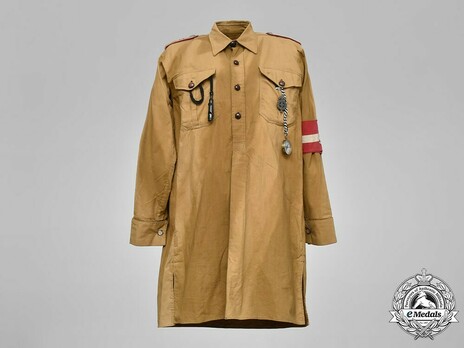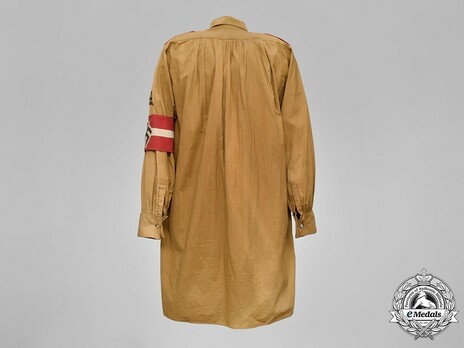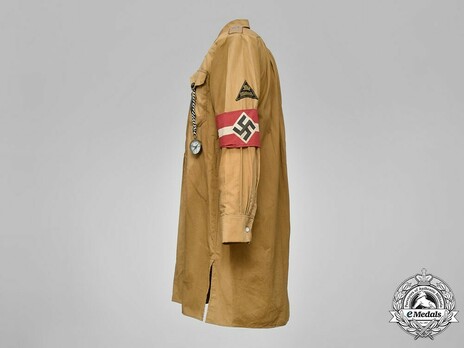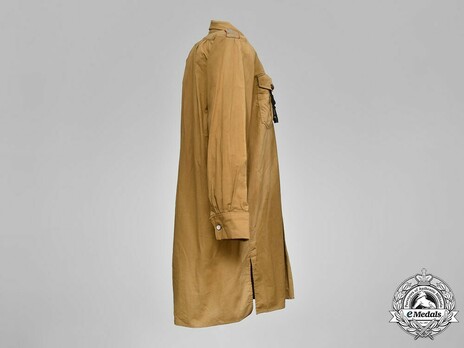HJ Service Shirt
SKU: 31.GOR.02.01.01.03.001
Estimated market value:




Estimated market value:
Attributes
History
In general, the uniforms of the male Hitler Youth members consisted of a top, a neckerchief and woggle – but a tie for officers –, bottoms, a belt, knee socks, and shoes or boots.
It is unknown when exactly the distinctive brown/khaki shirt was introduced, but it was roughly around 1925, and at the latest in 1926 with the official establishment of the Hitler Youth. It was worn by all male members and came to be associated with the organization.
During the early days, uniforms weren’t standardized yet, so the actual clothes worn varied a lot. Standardized regulations followed in 1933, and even more rigidly in 1934 with the establishment of the Reichszeugmeister (RZM, National Quartermaster Department). From September 6, 1934 on, the brown shirt was worn as part of both service uniforms (Dienstanzug), the undress uniform (Kleiner Dienstanzug) and the full dress uniform (Großer Dienstanzug), and both in summer and in winter. In summer it was the only top piece, in winter it was worn underneath a tunic.
It was specified as a cotton pullover with a lay-down collar, a frontal slash, and three buttons. It was worn open at the collar with the neckerchief and woggle, and had two pleated patch breast pockets with a buttoned flap. The sleeves were long, with a turn-back buttoned cuff.
The buttons were made from imitation leather. Real leather, metal, or other materials were not permitted.
On August 31, 1935, the shirt was discontinued and replaced by a twill blouse (Körperbluse). However, an unspecified brown shirt is still mentioned in future regulations to be worn underneath the various tunics, jackets, or coats.

Versions
$400 USD


Comments
Sign in to comment and reply.


Scroll Top